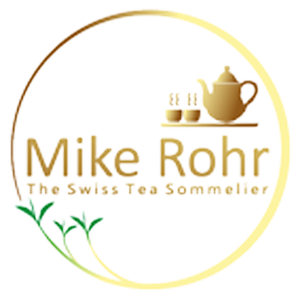Tea producers have become more explorative. Not only are there now tea plantations in Scotland, England and France, but there also some curious teas such as Mariage Frères’ (truly blue in colour) Blue Cactus Ice Tea made from a kind of tea that is not usually blue but which – confusingly – belongs to a category called ‘blue tea’.
With tongues that are much more partial to sweet drinks, young people have also taken to Bubble Tea. The ‘bubbles’ are black (tapiocia) or coloured (bobba) pearls and are either chewy or burst open in your mouth.
Colourless bubbles, on the other hand, can now be found in so-called sparkling teas, which are drinks intended for tea-with-fizz to make non-alcoholic inroads into the champagne sector. There are not many such teas on the market yet and it remains to be seen whether sparkling teas will prove profitable business.
Fortnum & Mason Sparkling Tea
On the shelves at F&M can now be found Fortnum’s Sparkling Tea. With 0% alcohol, it is specifically directed at pregnant mums. All it contains are water, green tea, white tea, black tea, mint leaves, grape juice, lemon juice, natural flavouring, CO2 and sulphites.
It pairs well with Fortnum’s organic smoked salmon, Fortnum’s paté, and Fortnum’s Melton Mowbray pork pie, F&M say. These lovely items can also be enjoyed on their own – or with a nice cup of tea especially if it is not diluted with grape juice and sulphites, most people would say.
Fortnum & Mason Rosé Sparkling Tea
This alternative to a Rosé Champagne is advertised by F&M as a marriage of Silver Needle (10%), some (?) Oolong, Darjeeling (9%), Sencha (2%) on the front label, while the small print also reveals hibiscus (20%), grape must, lemon juice, aromas, cardon dioxide [sic], and sulphites. The overall taste is that of hibiscus with bubbles, and many find that it does make a good alternative to alcoholic beverages in similar bottles.
The term ‘sic’ does not mean that this particular ingredient makes you sick. Instead, it localises a spelling error in the original. If anything, the sulphites might prove problematic to some drinkers.
Jing Sparkling Tea
As their first sparkling tea, Jing of London have produced Jing Jasmine Pearls (sparkling tea): No alcohol, no sugars, no added flavours. It proved a little tricky to obtain as Jing are hoping to build a warehouse in France before they will start selling it on the other side of the English channel. Apart from water and the taste of Jasmine Dragon Pearls, they have only added carbon dioxide for the bubbles, and tartaric acid. Like citric acid, which mainly stems from citrus fruits, tartaric acid, which naturally occurs in grapes, acts as a preservative and antioxidant but yields a sour taste.
Jing Sparkling Tea has made its appearance on the Afternoon Tea menu at the re-opened Savoy as an alternative to champagne. Having said this, the bubbly Jasmine Pearls failed to hook an avid female champagne drinker I had brought along for the tasting. Since it is cooled tea (When tea cools down, it often changes and loses flavour, which is the reason why so many producers of ice or iced tea add stupendous amounts of sugar in order to bring back the flavour), I was wondering what adding a little bit of sugar would do (apart from attracting a few frowns).





